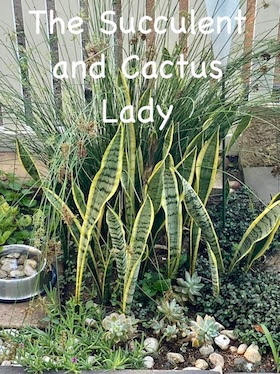All the rain has greatly benefited one of my succulents, my grass Aloe (A. cooperi) - moist soil, perfect conditions for these damp grassland species. This is the first time it has flowered since I acquired it early last year.
Indigenous to South African grasslands, A. cooperi grows singly or in small groups from offshoots at ground level. The flowers of Aloe cooperi vary in colour from greenish-cream to apricot and salmon pink. Easy and lovely in the garden and smaller than most Aloes, Aloe cooperi is hardier than most too – down to 10 degrees F (-12℃ - although we've never had it that cold here in Tarlton (Gauteng, South Africa). The blooming stalks grow to 3’ (1m) tall and bear very attractive flower heads. The thin leaves are held in a fan shape & are evergreen in milder climates. Aloe cooperi forms offsets freely. The leaves & flowers are eaten by the Zulu people. It is also used traditionally to ease birth.
The base of A. cooperi - I think it's ready to go into the ground now
Hail damage on my Pleiospilos compactus
::









Great to see that the rain helped! My plants also look like yours after the hail. Hopefully they will be in a good condition before winter is here!
ReplyDeleteSo do I Liz! The plants just love the rain but we can certainly do without the hail!
DeleteHi Maree. I am in souther New Zealand and was wondering if the A. cooperi can take a bit of winter rain if in a raised bed with no frost? Or will winter wet rot them out? Cheers Kelly.
ReplyDeleteHi Roger,
DeleteMost Aloes can withstand some extra water, but if you're too worried about your A. cooperi, you might consider keeping him in a pot (with good drainage) out in the garden where he will get some winter rain and just keep an eye on him for any signs of wilting.